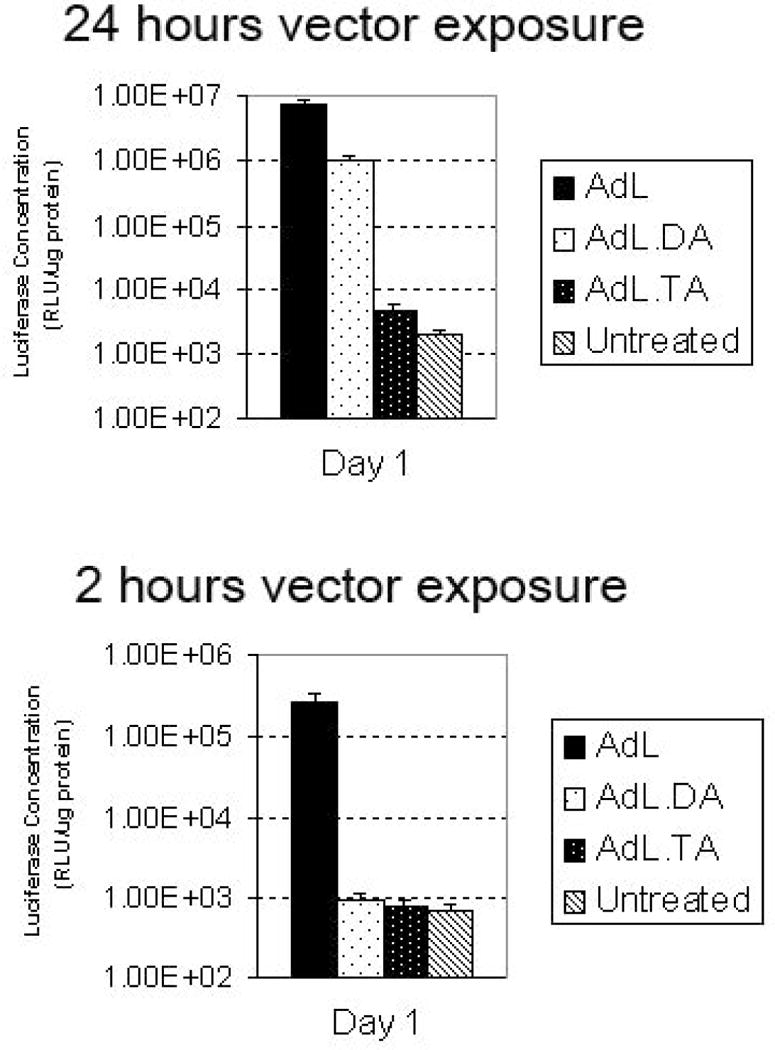Figure 3.

To test if the entry into the inner ear could be prevented a luciferase expressing vector with knob, penton and shaft mutations was designed. Adult mouse macular organ cultures were treated with native capsid vector (AdL), vector incapable of binding CAR and integrin (AdL.DA) and vector incapable of binding CAR, integrin and heparin (AdL.TA). After 24 hours cultures were harvested, protein extracted and luciferase levels determined. Native and CAR/integrin ablated capsid binding showed a high level of luciferase expression with a close to 10 fold difference in luciferase levels between native capsid vector and the CAR/integrin ablated vector. The addition of a mutation of the vector shaft region resulted in extremely low levels of luciferase expression (Fig 3A). These data suggest that an alternative mechanism of entry is directed by the Ad5 shaft interacting with heparin. To test if the kinetics of entry utilized by the Ad5 shaft interaction was indeed altered the time of entry of the vectors was by washing the cultures 2 hours after vector exposure (Fig 3B). After 24 hours cultures were harvested and luciferase levels determined. When the time of vector contact was limited to only 2 hours the overall transduction level of the normal capsid AdL was reduced (Fig 3B) and the modified capsid without CAR and integrin interactions was also limited.
